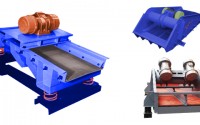The Ideal Way to Ensure Safety While Welding: Get all the PPE Pieces
When it comes to the economical and easiest way of joining metals, it’s all about welding. Taking the importance of metal in the society we live in, it`s not surprising welding has become the process for the creation of nearly everything that we can think of using: from coffee pots, and vehicles, to subways, planes, skyscrapers, and space vehicles.
Based on this, there is a variety of weld joint types, such as corner, lap, butt, edge, and T-joint. There’s also the variety of welding machines used (MIG, and TIG welders), and the different welding techniques, like the shielded metal arc welding, gas metal arc welding, gas tungsten metal arc welding, but one thing that’s common for them all is the aspect of safety which makes PPE (Personal Protective Equipment) so important.

Since it’s become known as the leading industry with eye injuries, we’re starting from the welding caps. Considering through welding there’s the weld area that gets all lit up, leading to ultraviolet rays burning the retinas of the eyes, and inflamming the cornea.
Along with this there’s the extreme heat being radiated, as well as flames, and smoke containing oxide particles, and that’s what makes welding caps the essential, basic pieces of PPE for anyone joining metals. The caps nowadays are designed to be lightweight, with arc sensors and adjustments (detection sensitivity) for more comfort, while providing utmost protection for the head, respiratory system, and eyes with the auto-darkening lens cover.
If you want to take the respiratory system protection to another level, plus the central nervous system, consider getting a respirator as well. Speaking of flames, it’s needless to say exposed skin is a definite no – you have to protect your skin from the radiant UV light. The clothing must be flame resistant, with long no-cuffed pants, leather aprons, protective rubber-soled boots, and insulated leather graded gloves that would also protect from electric shocks, sparks, and abrasion.
A word of advice is to steer away from folding up sleeves, and not tucking pants in the boots, so there’s no way for the sparks to get trapped. As soon as you get all the PPE pieces needed for safe welding, you have to ensure you maintain them to prolong their longevity, and prevent any issues from arising.
This goes for the welding machinery, as much as it does for PPE, considering they both have to do with your safety. Apart from the regular cleaning after welding, if you notice some parts of the PPE are worn out, or damaged, replace them.



